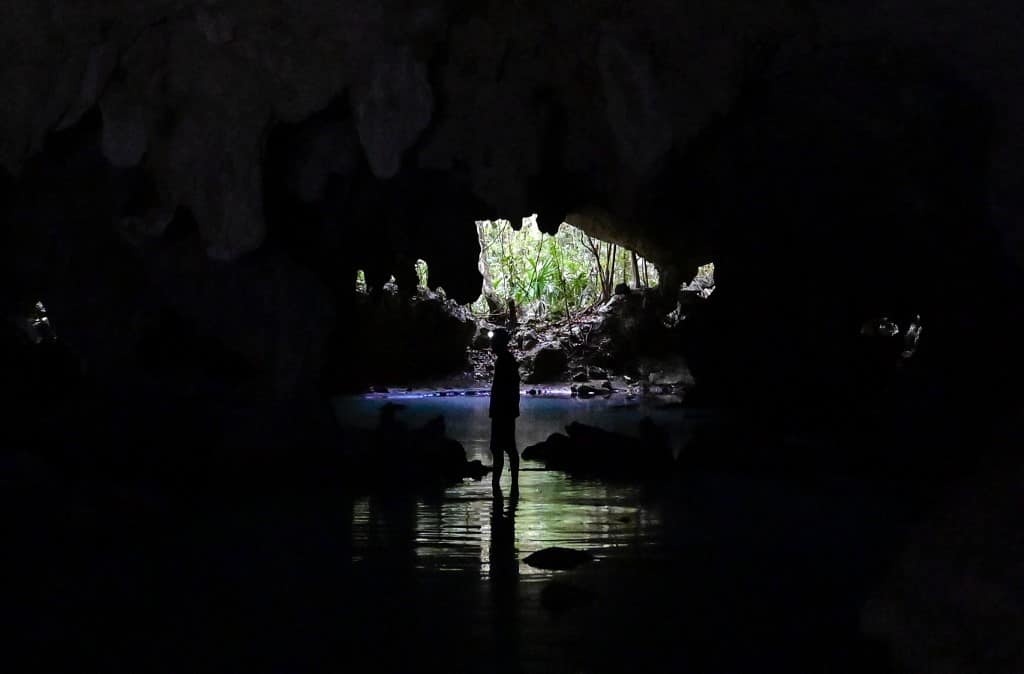Night falls in the Mexican jungle of Yucatán, where veterinarian Omar García extracts blood and fluids from a bat that will be analyzed to monitor zoonoses, diseases transmitted from animals to humans.
The last word has not yet been said about the origin of covid-19, but this Franco-Mexican project aims to detect viruses that can cross the barrier of wild species and reach humans in tropical climates, which would help to counteract new pandemics.
The winged mammal, in the sights of the world scientific community as a possible vector of the coronavirus, remains motionless, obedient, showing its sharp fangs as if smiling, before being released by Garcia, a specialist in vector-borne diseases.
Scientists from different fields at the Institute for Research for Development (IRD) in France and the state-run National Autonomous University of Mexico (UNAM) have been collaborating since 2017 on this study, which includes a modern laboratory, baptized Eldorado, in Merida, capital of the state of Yucatan (east).
The specific objective is to learn how different viruses that circulate among animals, birds, rodents, excrement or mosquitoes can potentially end up in humans, explains Audrey Arnal, from the IRD.
“This is zoonosis (…), understanding what could be the consequences of human contact with wildlife and then understanding what could be the next epidemic that could come out of the wild,” said the infectious disease expert.
Scientists sample all kinds of animals from the rich ecosystem of this rainforest, where they have identified 61 species of mosquitoes.
“We have many questions” to “try to complete the history of the transmission cycle” of the viruses, explains María José Tolsá, a biologist at UNAM, who after a decade of research, finally feels that her effort is valued.
“How much is a pandemic worth and how much is prevention worth?” she reflects amidst the mooing of cattle in a rural area of the municipality of Tzucacab.
High-risk zone
The research could be carried out in any jungle area of the world, but Yucatan was chosen because accelerated deforestation has made it “a very emblematic region in terms of zoonotic emergence risks,” says Benjamin Roche, IRD and co-director of Eldorado.
Most transmissions occur in intertropical regions and it is estimated that between 500,000 and 800,000 viruses could affect humans, adds the French specialist in ecology and evolutionary biology.
The risks also increase with the expansion of the agricultural frontier and tourism, which multiply contacts between animals and humans, according to the researchers.
Thousands of trees have been cut down in the Yucatan peninsula to build the 1,554 km long Tren Maya, which will begin operations in December, but the government claims to compensate for this loss with a program of forest planting and the creation of the second largest rainforest reserve in the world after the Amazon.
The key is to strike a balance between humans and nature, Arnal says. “We can’t say ‘let’s turn the peninsula into a mountain’. The population must live, eat, develop its economy.”
The research is being carried out in 12 communities in the three states that make up the peninsula. “In birds we have found species that have been identified as reservoirs for the West Nile virus or birds that are reservoirs for influenza,” explains Rosa Elena Sarmiento, from the virology laboratory of the UNAM’s Veterinary School.
Last December, almost two million farm birds affected by influenza, a virus that the researchers were unable to identify in the species they are investigating, were slaughtered.
The work in the field begins at dawn by placing a dozen fine nets similar to volleyball nets in which birds are trapped, while at nightfall bats and even owls fall in.
Once in the traps, samples of blood, fluids and ectoparasites (if present) are taken; the scientists identify the animal, measure it and record the data. Before releasing them, they verify that they are in good condition.
And then to the laboratory, where the material is analyzed. “DNA is a great revealer (…), with the mosquito’s blood we can determine which species or which animal was eaten,” Arnal explains.
Blood samples will also be taken from villagers to determine if they carry any animal-borne virus.
Social factor
The project also includes consultations with the communities to learn about their environmental and social problems and to encourage ways of coexisting with nature.
“We cannot impose (…), there has to be a dialogue of knowledge with the communities”, explains Erika Marcé Santos, member of the NGO Kalaankab and liaison with the inhabitants.
Eldorado is connected to laboratories in Africa, South Asia and other Latin American countries as part of the Prezode initiative (prevention of risks of zoonotic emergencies and pandemics), launched by France in 2022 and involving 22 countries and 200 organizations.
“What we are looking for in Yucatan is to devise a prevention strategy against zoonoses that can serve as an example for the whole world,” says Benjamin Roche.






